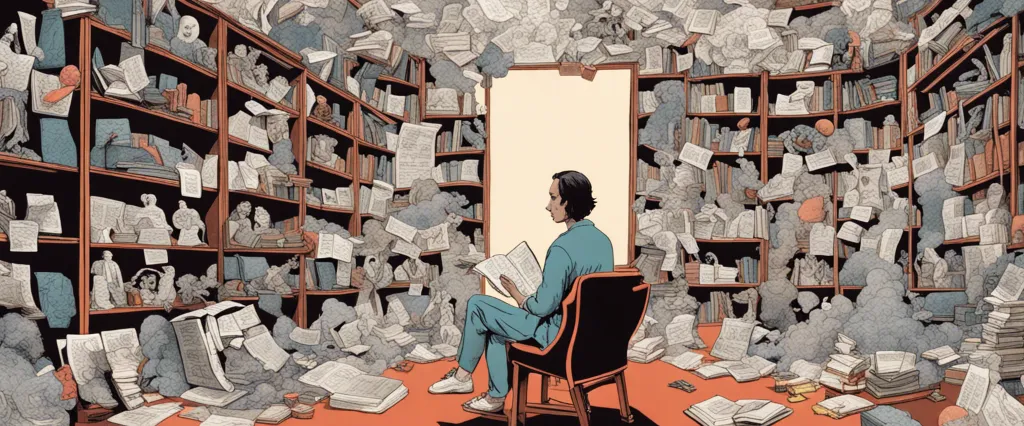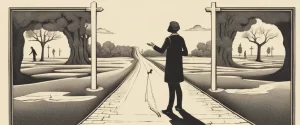——The Anatomy of Story by John Truby & Story by Robert McKee

Storytelling is a powerful art form that has captivated individuals for centuries, allowing them to escape into fictional worlds and connect with characters across time and space. However, the process of crafting a compelling narrative is not an easy task. It requires a deep understanding of the underlying mechanisms that make stories resonate with audiences on a universal level. Two renowned authorities in the world of storytelling, John Truby and Robert McKee, have extensively explored the intricacies of this craft in their respective books, “The Anatomy of Story” and “Story.” In this comparative study, we will delve into these two remarkable works, examining their unique perspectives, methodologies, and insights into the art of storytelling.
As the title suggests, “The Anatomy of Story” by John Truby delves into the inner workings and structure of narratives. Truby, an accomplished screenwriter and lecturer, explores the essential elements that comprise a compelling story. From character development to plot structure, he presents a comprehensive approach to storytelling that emphasizes the importance of creating multidimensional characters and interweaving their journeys within a well-crafted narrative framework. Truby’s systematic breakdown of storytelling components enables writers to understand the building blocks of successful narratives and harness them effectively in their own work.
Contrastingly, Robert McKee’s book, aptly titled “Story,” takes a slightly different approach to the art of storytelling. Having earned his reputation as a leading authority in screenwriting education, McKee delves into the fundamental principles that underpin engaging narratives. By emphasizing the significance of conflict, McKee urges writers to explore the depths of their characters’ desires, fears, and motivations, allowing for the creation of captivating storylines. With a focus on the emotional and psychological aspects of storytelling, McKee advocates for the exploration of human nature as the driving force behind memorable narratives.
While both “The Anatomy of Story” and “Story” seek to aid writers in their quest to create compelling narratives, they approach the subject matter from different angles. Truby emphasizes the importance of structure and character development, providing a step-by-step guide for constructing fully realized stories. McKee, on the other hand, emphasizes conflict and the exploration of human nature, striving to unearth the emotional and psychological elements that elevate narratives to a new level.
Through this comparative study, we aim to delve into the nuanced differences and similarities between these two profound books on storytelling. By examining their methodologies and perspectives, we can more comprehensively grasp the art of crafting captivating narratives and gain invaluable insight into the creative process. With this knowledge in hand, aspiring writers will be equipped to spin the tales that resonate with audiences and stand the test of time.
Brief Summary of Two Books
The Anatomy of Story by John Truby
“The Anatomy of Story” by John Truby is a comprehensive guide to understanding and crafting compelling narratives. Truby emphasizes the importance of structure, character development, and theme in storytelling, providing aspiring writers with practical tools for creating impactful and engaging stories. The book delves into the fundamental building blocks of storytelling, including crafting strong characters, constructing effective plotlines, and developing meaningful and resonant themes. Truby offers insightful analysis of popular narratives, breaking them down into key components to reveal the underlying techniques used by successful storytellers. Through a combination of theory and practical exercises, readers are guided in the process of constructing their own stories and utilizing the power of storytelling to captivate audiences. “The Anatomy of Story” is a valuable resource for writers of all levels, offering both conceptual understanding and practical techniques to enhance their storytelling abilities.
Story by Robert McKee
“Story” by Robert McKee is a renowned guide for writers, screenwriters, and storytellers alike. In this book, McKee explores the principles and techniques behind compelling storytelling and offers a comprehensive framework for crafting engaging narratives.
The book delves into various aspects of storytelling, covering plot structure, character development, dialogue, themes, and the art of creating suspense. McKee emphasizes the importance of understanding the essence of stories, their purpose, and how they can emotionally resonate with audiences. He also delves into the role of conflict and the power of creating well-defined character arcs, providing practical advice and examples from well-known films and literature.
McKee’s approach revolves around the belief that great storytelling is deeply rooted in human nature, and understands that the exploration of characters and situations can shed light on the human condition. Through his insightful analysis and in-depth exploration of the storytelling craft, McKee provides readers with the tools and guidance necessary to create impactful and memorable stories.
“Story” has become a go-to resource for writers, screenwriters, and storytellers across various mediums. It offers valuable insights and practical techniques that can be applied to various forms of storytelling, making it an essential read for anyone interested in the art of crafting narratives.
Comparison between Two Books

Similarities in Movie
Both “The Anatomy of Story” by John Truby and “Story” by Robert McKee are renowned books that delve into the craft of storytelling, with a specific focus on movies. Here are some of the similarities between the two books regarding movies:
1. Structural Analysis: Both books emphasize the importance of understanding the underlying structure of a story in filmmaking. They analyze and break down the key components, such as acts, plot points, and character arcs, highlighting their significance in creating a compelling narrative.
2. Character Development: Both books stress the significance of well-developed characters in movies. They explore different character archetypes, motivations, and arcs, providing guidance on how to create multidimensional and relatable characters that engage the audience.
3. Plot and Conflict: The books discuss the importance of conflict in driving the plot forward. They examine various types of conflict (internal, external, and interpersonal) and demonstrate how conflict contributes to the overall storytelling experience in films.
4. Genre Considerations: Truby and McKee both acknowledge the role of genre in shaping storytelling. They explain how different genres have specific conventions and expectations, which can guide and influence the plot, characters, and overall narrative structure of a movie.
5. Theme Exploration: In both books, the authors address the significance of thematic elements in movies. They discuss how identifying and exploring a central theme can provide a cohesive thread throughout the story, creating deeper meaning and resonance for the audience.
6. Techniques and Craft: Truby and McKee delve into various techniques and craft elements that are crucial in movie storytelling. They discuss aspects such as dialogue writing, visual storytelling, pacing, and creating effective setups and payoffs, sharing valuable insights and practical advice for aspiring filmmakers.
Overall, both “The Anatomy of Story” and “Story” offer comprehensive analyses of movies as storytelling vehicles. They share similarities in terms of their focus on narrative structure, character development, conflict, genre considerations, theme exploration, and techniques within the realm of cinematic storytelling.
Divergences in Movie
The Anatomy of Story by John Truby and Story by Robert McKee are both renowned books that offer comprehensive guides on storytelling. While they share similarities in their focus on the craft of storytelling, there are notable differences in their approaches, with Truby’s book touching upon specific divergence relating to movies. Let’s delve into these divergent points:
1. Truby’s systematic approach: Truby’s book, The Anatomy of Story, provides writers with a step-by-step, analytical framework for constructing a script or story. He emphasizes the importance of developing a solid foundation by identifying the story’s moral and controlling idea and then constructing the plot through a meticulously outlined process. Truby’s book diverges from McKee’s in the sense that it provides an overarching structure that can be applied to any form of storytelling, including movies.
2. McKee’s focus on screenwriting: Story by Robert McKee primarily targets aspiring screenwriters and filmmakers. This book specifically caters to movie storytelling by dissecting successful films and analyzing them in terms of structure, dialogue, character development, and other cinematic elements. McKee’s book delves deep into the technical aspects of screenplay writing, offering insights specific to the film industry.
3. The importance of genre: While both books recognize the significance of genre in storytelling, Truby goes a step further in exploring various genres and their specific requirements. Truby asserts that understanding the conventions of a particular genre is essential for crafting a successful story. This emphasis on genre sets Truby’s book apart when it comes to movie storytelling, as movies often adhere to specific genre conventions to resonate with their audiences.
4. Narrative vs. structure: The Anatomy of Story places a heavy emphasis on constructing a robust and compelling narrative. Truby argues that story comes before structure and advocates for writers to develop their narratives organically, allowing the plot and structure to naturally flow from the characters and their arcs. On the other hand, Story by Robert McKee highlights the importance of structure in creating a cohesive screenplay. McKee provides a detailed breakdown of the three-act structure commonly used in screenwriting, making it a suitable resource for aspiring filmmakers looking to create commercially successful movies.
In conclusion, while both The Anatomy of Story by John Truby and Story by Robert McKee offer valuable insights into the craft of storytelling, there are notable divergences when it comes to movies. Truby’s book provides a systematic approach that can be applied to any form of storytelling, including movies, while McKee’s book specifically caters to the needs of screenwriters and filmmakers, emphasizing the technical aspects of screenplay writing and the significance of structure.

Conclusion
Both “The Anatomy of Story” by John Truby and “Story” by Robert McKee are highly regarded books on the craft of storytelling. Which book is more worthy of reading ultimately depends on personal preferences and what specific aspects of storytelling you are looking to learn about.
“The Anatomy of Story” by John Truby offers a comprehensive and systematic approach to building stories. Truby breaks down the elements of a great story, including character development, plot structure, theme, and scene construction. He provides practical techniques and exercises to help writers create their own unique stories.
On the other hand, “Story” by Robert McKee dives deep into the principles of screenwriting, focusing on the structure and techniques used in film and television storytelling. McKee analyzes classic films and TV shows to illustrate his concepts, and he offers valuable insights into character arcs, dialogue, and conflict.
To decide between the two, consider what aspects of storytelling you are most interested in. If you are primarily interested in developing characters, plot structure, and exploring various storytelling techniques, “The Anatomy of Story” may be more suitable. If you are interested in writing for film and television specifically, or if you want to delve into the analysis of successful screenplays, “Story” by Robert McKee may be the better choice.
Ultimately, both books have their merits and are highly recommended by many writers and storytellers. If possible, you may consider reading both to gain a broader understanding of storytelling techniques and approaches.


